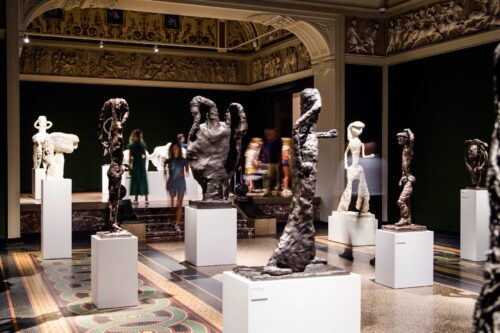Ny Carlsberg Glyptotek
The NY Carlsberg Glyptotek is very close to the National Museum. Three hundred meters (less than five minutes on foot) to the west of the National Museum’s Entrance lies another treasure trove of art that is rightfully within the top three visited museums of the Danish capital. Ny Carlsberg Glyptotek is the fortunate outcome of a passionate collection of antique masterpieces, Danish golden age and Post-Impressionist art, acquired by the magnate Carl Jacobsen (1842-1914), son of the founder of the Carlsberg Breweries.
Jacobsen funneled a great part of his private economic surplus into the creation of his amazing collection, which he later donated to the Danish state. He was also the one who funded the creation of the building that houses the collection, which was completed in two phases.


The first building, the Dahlerup Wing (architect Vilhelm Dahlerup 1836 – 1907), inaugurated in 1897, houses the French and Danish collections and is characterized by its Venetian Renaissance style. The neoclassical Kampmann Wing (architect Hack Kampmann 1856-1920) built to house the Greek, Roman, and Egyptian artifacts as well as the Winter Garden which connected the two wings were inaugurated in 1906.
The Henning Larsen Wing, a modern, 2.500 m² building, with three exhibition floors and an accessible rooftop terrace with a panorama of Copenhagen, constructed inside the courtyard of the Kampmann Wing in 1996 is the newest addition.


Its unique and rich sequence of daylight infusions and blacked-out rooms, inspired by both ancient Egyptian buildings and small Mediterranean mountain villages creates a mystique atmosphere and an intense interaction between architecture and works.
Overall Glyptotek’s superlative collection contains over 10,000 works of art and archaeological objects and offers ever-new perspectives on life, culture, and civilization through a period of 6,000 years. More



